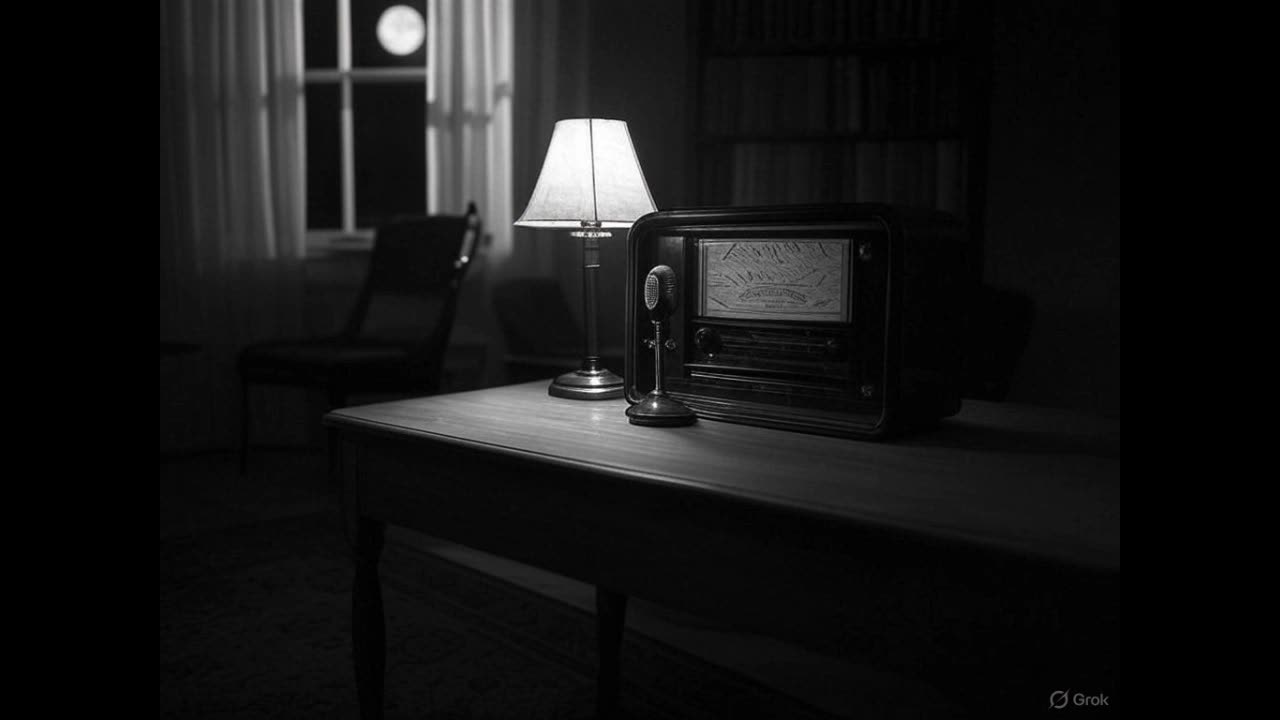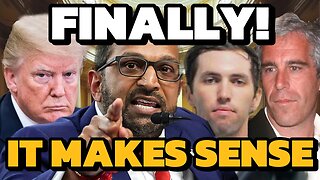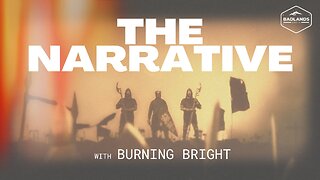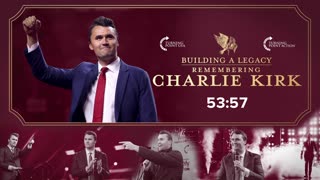Premium Only Content

Lights Out: Chicken Heart (February 23, 1938)
Setting: A scientific research institute in an American city, transitioning to chaotic urban scenes as the horror unfolds, set in the present day (1938). The episode uses minimalistic sound effects, notably the iconic “thump-thump” of a beating heart, to evoke terror.
Plot:
Introduction: The episode opens with Arch Oboler’s signature eerie narration, urging listeners to turn out their lights for maximum effect. The scene is set at a research institute where Dr. Alberts, a scientist with a German accent, is showcasing an experiment to a group of visitors, including Mrs. Halop, a clubwoman, and Lewis, a reporter.
The Experiment: Dr. Alberts proudly displays a chicken heart, kept alive for seventeen months in a quartz container using a modified “robot heart” apparatus (inspired by Alexis Carrel and Charles Lindbergh’s real-life organ perfusion experiments). The heart beats independently, sustained by Hartman’s solution, a tissue fluid mimic, pumped sixty times per minute. The visitors marvel at the scientific feat, with ad-libbed reactions like “Napoleon’s heart!” underscoring its wonder.
Catastrophic Growth: The experiment goes awry when the apparatus is accidentally smashed, possibly by the visitors, spilling chemicals from a nearby rack onto the heart. Over the weekend, the thumbnail-sized heart grows miraculously into a mass of pulsing flesh “a thousand times its original size.” Dr. Alberts speculates that an unknown chemical reaction caused this super-growth, defying scientific explanation. Lewis, eager for a scoop, presses to break the story.
Escalating Horror: The narrative shifts to chaos as the heart continues to grow exponentially, doubling in size hourly. Dr. Alberts warns a skeptical crowd that the now block-sized mass will cover the city in 30 hours, the state in 60 hours, and the entire United States in two weeks, crushing everything in its path. The “thump-thump” sound effect, growing louder, amplifies the terror. Emergency crews attempt to stop the “cannibal flesh,” but their efforts fail, and panic ensues with sound effects of sirens and crowds.
Climax and Ambiguity: The episode’s ending is abrupt and open-ended, a hallmark of Oboler’s style. The heart’s relentless growth is implied to be unstoppable, leaving listeners to imagine the apocalyptic outcome. The script emphasizes auditory horror over resolution, with the final “thump-thump” fading into Oboler’s closing narration, likely urging listeners to confront their fears in the dark.
Themes: The dangers of unchecked scientific ambition, the fragility of human control over nature, and the power of imagination to evoke fear. The episode exploits, as Stephen King noted, “the mind’s willingness to see whatever someone suggests,” forcing listeners to visualize the grotesque heart.
Cast and Roles (per Generic Radio Workshop script):
Dr. Alberts: Played by an unnamed actor with a “definite German accent,” styled after Jean Hersholt’s warm but authoritative demeanor. He’s the head of the research institute, initially proud but increasingly frantic as the heart grows.
Lewis: An unnamed actor, portrayed as a late-20s reporter in the “George Brent or Don Ameche” mold, ambitious and skeptical, pushing to report the story.
Mrs. Halop: An unnamed actress, a “chairwoman type” clubwoman, big and bustling, reacting with awe and disbelief to the experiment.
Supporting Roles (Bits): Includes a Japanese research assistant, a Hebrew tailor, a “colored man,” a busybody woman, policeman, mayor, soldier, and fireman, all handled by the principals plus two additional actors. These roles add to the chaotic crowd scenes, with ad-libbed lines like “Chicken heart a block square!” and “He’s nuts!” reflecting public panic.
Narrator: Likely Arch Oboler himself, delivering the opening and closing remarks in his signature ominous tone, setting the mood and framing the story.
Note on Cast: Lights Out rarely credited actors, focusing on the story’s impact. The ensemble, likely Chicago-based radio talent, delivered exaggerated performances typical of horror radio, with sound effects carrying much of the terror.
Production Details:
Music: Minimal, likely a haunting organ or string motif to open and close, with the episode relying heavily on sound effects (e.g., “thump-thump” of the heart, sirens, crowd murmurs).
Writer/Director: Arch Oboler, known for his innovative use of stream-of-consciousness narration and social commentary, crafting a script inspired by a Chicago Tribune article about a preserved chicken heart.
Sound Effects: Central to the episode, with the rhythmic “thump-thump” (compared to Wyllis Cooper’s earlier “slurp-slurp” amoeba episode) creating an auditory monster, augmented by crashes (apparatus breaking) and urban chaos sounds.
Sponsor: None for this 1938 broadcast, as Lights Out aired late at night, often unsponsored, relying on NBC’s support.
-
 LIVE
LIVE
LFA TV
13 hours agoLFA TV ALL DAY STREAM ! | MONDAY 9/22/25
3,626 watching -
 1:09:12
1:09:12
JULIE GREEN MINISTRIES
3 hours agoLIVE WITH JULIE
80.7K152 -
 4:01:24
4:01:24
The Bubba Army
3 days ago90K Honor Charlie Kirk At Memorial - Bubba the Love Sponge® Show | 9/22/25
49.3K14 -
 38:21
38:21
Stephen Gardner
2 days ago🔥Is Kash Patel HIDING DETAILS About Charlie Kirk & Jeffrey Epstein? Judge Joe Brown
89.4K208 -
 26:33
26:33
DeVory Darkins
1 day ago $62.52 earnedRep Omar EMBARRASSES herself in a painful way as Newsom PANICS over Kamala confrontation
120K344 -
 3:28:14
3:28:14
Badlands Media
1 day agoThe Narrative Ep. 39: The Sovereign Mind
147K44 -
 2:17:35
2:17:35
TheSaltyCracker
14 hours agoThe Charlie Kirk Effect ReeEEStream 9-21-25
166K415 -
 2:03:07
2:03:07
vivafrei
14 hours agoEp. 283: Charlie Kirk Memorial and other Stuff in the Law World
261K243 -
 9:13:12
9:13:12
The Charlie Kirk Show
1 day agoLIVE NOW: Building A Legacy, Remembering Charlie Kirk
2.23M1K -
 1:55:20
1:55:20
The White House
17 hours agoPresident Trump Participates in the Memorial Service for Charlie Kirk
138K98